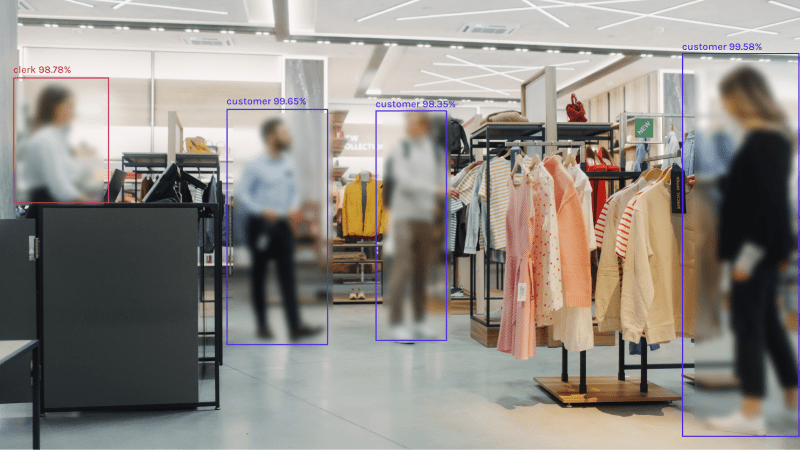Netflix Tagging Revolution: Shaping the Future of Entertainment

In the realm of streaming giants, Netflix stands as a trailblazer, continually innovating to enhance user experience. One such innovation that’s making waves is its sophisticated tagging system. Netflix tagging, often invisible to users, plays a pivotal role in recommending content and personalizing the streaming experience. In this blog, we’ll explore the world of Netflix tagger, its evolution, and the profound impact it has on the entertainment industry. Get ready to dive into the future of entertainment recommendation systems.
The Evolution of Netflix Tagging
Netflix’s tagging system, also known as the recommendation algorithm, has come a long way since its inception. It started as a relatively basic system that relied on user ratings and genre categorizations. Over time, it has evolved into a complex and data-driven powerhouse that utilizes cutting-edge machine learning and artificial intelligence (AI) technologies.
The journey from basic tags to the advanced system we see today can be summarized in three stages:
- Manual Tagging: In the early days, Netflix relied on manual tagging, where employees would categorize content based on genres and keywords. While this provided some structure, it had limitations in handling the vast amount of content available.
- Collaborative Filtering: Netflix then turned to collaborative filtering, analyzing user behavior, such as viewing history and ratings, to generate recommendations. This stage marked a significant improvement in personalization but was still limited in terms of content discovery.
- Machine Learning and AI: Present-day Netflix employs advanced machine learning algorithms and AI to analyze vast datasets, encompassing user interactions, content attributes, and even the visual and audio characteristics of content. This enables Netflix to make highly accurate recommendations and even predict user preferences.
The Impact of Netflix Tagging on User Experience
Netflix’s tagging system has had a profound impact on user experience and engagement:
- Personalization: Netflix’s recommendations are incredibly accurate, reflecting users’ individual tastes and preferences. This level of personalization keeps viewers engaged, leading to longer streaming sessions.
- Content Discovery: Tagging helps users discover new and diverse content they might not have found through traditional genre categorizations. It encourages exploration and broadens horizons.
- Reduced Decision Fatigue: With an overwhelming amount of content available, Netflix tagging simplifies the decision-making process by presenting users with tailored options, reducing the time spent searching for something to watch.
- Content Diversity: Netflix tagging promotes diversity in content consumption. Users are more likely to explore and appreciate different genres and cultures when recommendations are precisely tuned to their interests.
- Content Promotion: Tagging allows Netflix to promote niche or underrepresented content, giving smaller productions and international titles a chance to shine.
The Future of Netflix Tagging
Netflix’s commitment to innovation suggests an exciting future for its tagging system:
- Enhanced AI: As AI technology continues to advance, Netflix’s tagging will become even more accurate and nuanced. It will understand not only what users like but why they like it.
- Interactivity: Netflix is exploring interactive content where viewers make choices that affect the storyline. Tagging will play a crucial role in recommending interactive content tailored to each user’s preferences.
- Content Creation: Netflix can use tagging insights to inform content creation decisions, ensuring that they produce content that resonates with their target audience.
- Global Reach: With an increasingly global audience, Netflix tagging will become more culturally sensitive, recommending content that reflects the diversity of its viewers.
- Privacy Measures: As concerns about data privacy grow, Netflix will likely develop more robust privacy measures, allowing users to control their data and improve recommendations.
Netflix Tagging and the Entertainment Industry
The impact of Netflix tagging extends beyond the platform itself, influencing the broader entertainment industry:
- Competition: Other streaming services are investing heavily in improving their recommendation algorithms to compete with Netflix. This competition drives innovation and benefits viewers across multiple platforms.
- Content Production: Netflix’s insights into viewer preferences influence not only the type of content they recommend but also the content they produce. This data-driven approach can shape the direction of the entertainment industry as a whole.
- Content Discovery: Netflix’s emphasis on content discovery encourages viewers to explore a wider range of titles, including international and independent productions. This, in turn, supports a more diverse and inclusive entertainment landscape.
Conclusion: Shaping the Future of Entertainment
Netflix tagging is more than just a recommendation system; it’s a driving force shaping the future of entertainment. Through continuous innovation and the power of AI and machine learning, Netflix provides viewers with a personalized and engaging streaming experience. This not only retains existing subscribers but also sets new standards for the entire entertainment industry.
As Netflix continues to lead the way in the world of streaming, it’s clear that tagging will play an increasingly crucial role. To watch your favorite show you can change region on Netflix with the help of VPN, etc. The ability to understand, predict, and cater to individual preferences will define the success of streaming platforms in the years to come. With Netflix at the forefront, we can expect a future where entertainment is not just accessible but deeply personalized, enriching our lives in ways we could have only dreamed of in the past.





